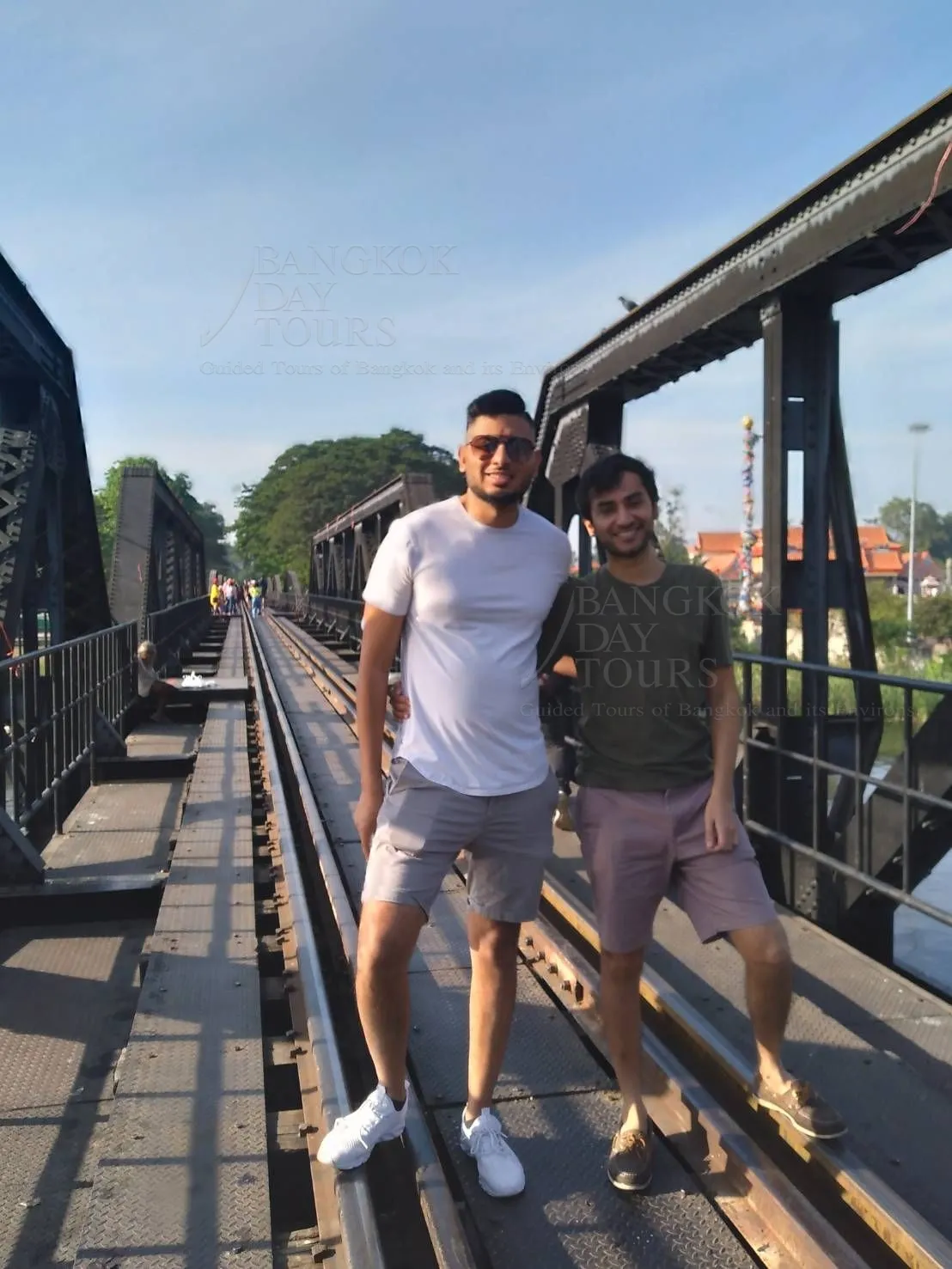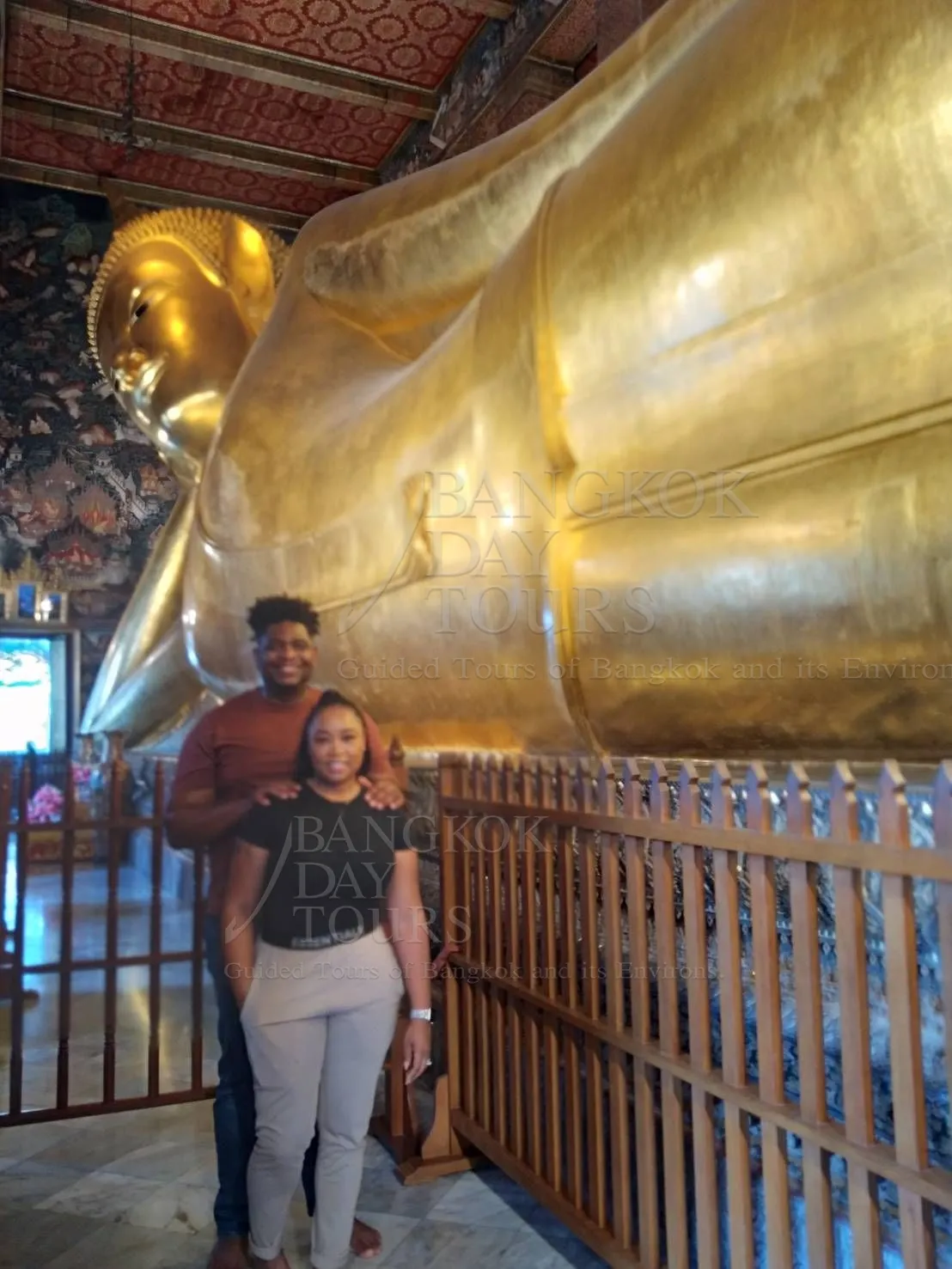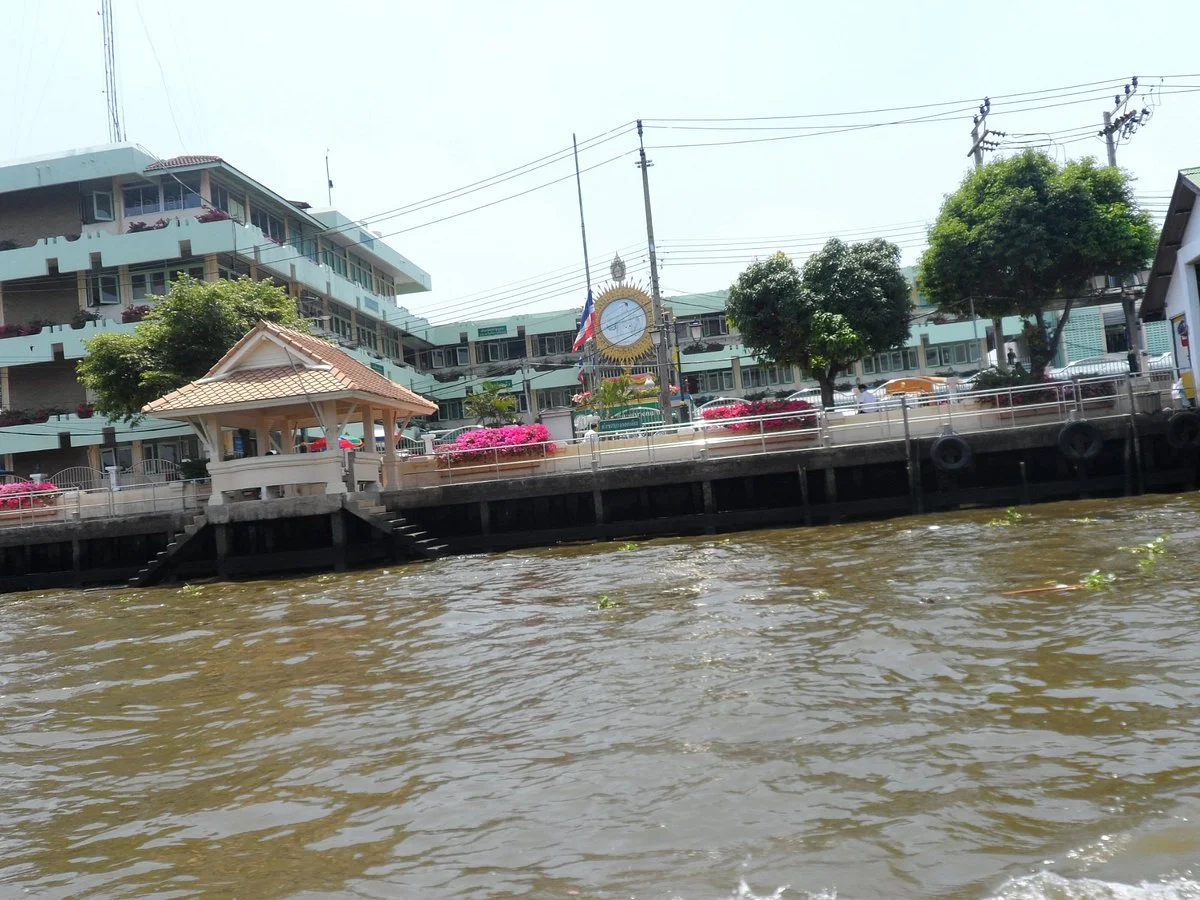
Attractions information
Klong Toey Port
Klong Toey Port is where the smaller cruise ships dock when they visit Bangkok. The port is 26 kilometers up the Chao Phraya River and is right in the heart of Bangkok city.
It's commonly known as Bangkok Port and was Thailand's only major port for sea transportation of cargo from 1938 until 1991.
The construction of Klong Toey Port began in 1938 and finished after the end of World War II.
The port is located on the Chao Phraya River not far from Gulf of Thailand. Due to its limited capacity and traffic problems caused by semi-trailer trucks, much of the shipping operation has been moved to the new container terminal at Laem Chabang in Chon Buri Province.
In the past Klong Toey was the major night entertainment area for the whole city of Bangkok. It had its heyday in the 1960's and 1970's dying out almost completely in the 1980's when the Bangkok Port Authority claimed the land that was home to the majority of the night entertainment venues.
The whole area is a bit tatty and grubby, like any port, but the positive side for the cruise ships docking here is that they are right in the centre of Bangkok and are not subjected to the two-hour drive from Laem Chabang.
Cruise ships using Klong Toey Port during the 2009-2010 season include Azamara Quest, Seabourn Odyssey, Seabourn Pride & Oceania Nautica.

Attractions information
Kanchanaburi Province
Kanchanaburi Province which borders Myanmar (Burma) to the north-west is the third largest Thailand's of seventy six provinces.
It is located 130 km west of Bangkok and has a population of about 735,000 of which 54,000 live in Kanchanaburi town itself. This is a most picturesque part of Thailand.
Kanchanaburi town was originally established by King Rama I as a first line of defence against the Burmese, who might use the old invasion route through the Three Pagodas Pass on the Thai-Burma border.
The magnificent landscape & charming beauty of Kanchanaburi have resulted in major tourist attractions including the well-known Erawan Waterfalls, caves which were once inhabited by Neolithic man, pristine national parks, tranquil rivers, virgin forests, and reservoir.
Together, they offer an intriguing experience whether you are visiting for the first-time or returning for another visit.
Whatever your personal interest: fishing, rafting, canoeing, mountain biking, bird-watching, star-gazing, golfing, elephants, tigers, jungle trekking or even living on bamboo rafts, Kanchanaburi takes pride in offering them all.
Local residents of Kanchanaburi are engaged in agricultural activities as this is one of the most fertile provinces. Most of the locals are of Thai ancestry with notable Mon and Karen minorities.
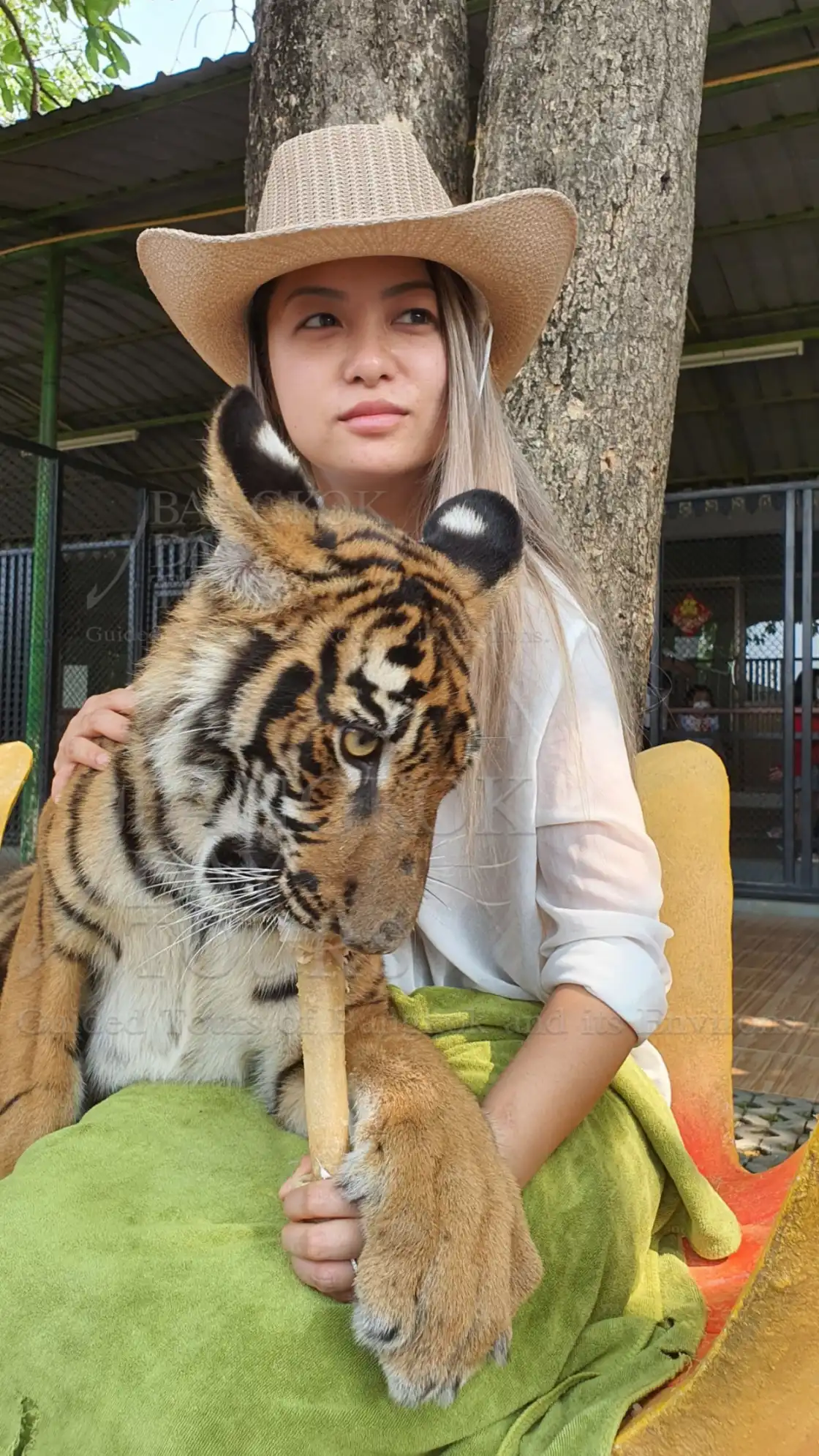
Attractions information
Tiger Temple Classic Afternoon
In Kanchanaburi Province there is a forest temple, founded in 1994, which has become a sanctuary for numerous wild animals including many tigers.
While it is more commonly known as The Tiger Temple, its Thai name is Wat Pha Luang Ta Bua Yannasampanno.
The abbot, Phra Acharn Phusit, has been caring for abandoned tigers since 1999. The mother of the first cub he took in had been killed by poachers. The first tiger cub died from its injuries, but a few weeks later two more tiger cubs were rescued from poachers and brought to the temple.
Word soon spread and more abandoned or injured tigers were brought to the temple. By 2005 there were 17 tigers at the temple. Seven were orphans rescued from the wild and ten have been born and bred here at the temple.
The monastery is situated adjacent to Burma. Protected areas and national parks along the Thai-Burma border are believed to contain the largest surviving populations of tigers in Thailand.
Unfortunately, while these areas are protected, poaching still occurs. A poacher can earn several years of a farmer's salary for killing a tiger, so the profit is well worth the risk. After the mother tiger is killed the cubs are taken as a bonus, or left to fend for themselves in the jungle and if found are left here.
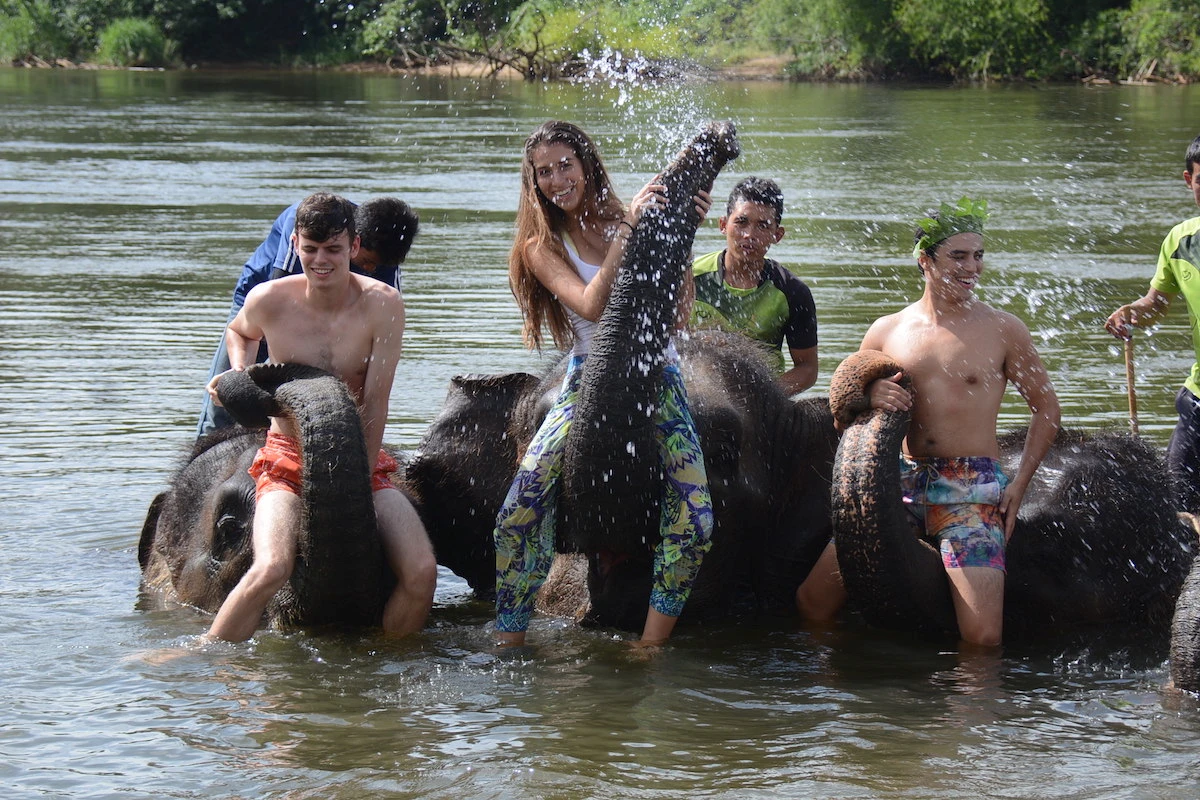
Attractions information
Ride & Bathe Elephants
In Thailand, elephants are the most revered of all animals and still play an active part within Thai society and culture.
In the past they have been used at the forefront of battles and in more recent times to assist in the logging trade. Now, visitors have the opportunity to ride and bathe them.
Despite their vast size, elephants are remarkably agile and are particularly adept at negotiating the narrow tracks in the forest. It's a little nerve wracking, especially when they are going downhill and so make sure you hold on tight.
They often pause along the way, bending far out to pluck some tasty morsel, oblivious to you perched high on their back.
The mahout will jump off during your trek and invite you to slide down onto the elephant's neck and take control. Be warned that their hair is prickly so shorts are not the best attire for this experience.
And also you will be able to bathe the elephants in the waters of the local river. You'll get wet, so don't forget your swimmers. We'll provide the life jackets for you if you want.
Important Information
Not every tour includes bathing the elephants. Please check the Tour Programme.

Attractions information
Bridge over the River Kwai
The Bridge over the River Kwai was built during World War II for the Japanese Army using Allied POWs.
Altogether, 61,700 British, American, Australian, Dutch and New Zealand soldiers and a large number of Chinese, Vietnamese, Japanese, Malaysian, Thai, Burmese and Indian labourers were involved.
Two bridges were actually built side by side. A wooden trestle bridge, which is no longer there, was completed in February 1943 and an eleven span steel bridge completed in April 1943.
This bridge had been dismantled by the Japanese and brought to Kanchanaburi from Java in 1942. The central spans were destroyed by Allied bombings and rebuilt by British Army Engineers immediately after the war.
It was part of the strategic railway linking Thailand with Burma. During the construction of the bridge over the Khwae Yai River - River Kwai as it is known among foreigners - the brutalities of war, disease and starvation claimed thousands of POWs lives.
The bridge was immortalised in the book by Pierre Boulle entitled The Bridge Over The River Kwai and later in the movie of the same name. Unfortunately, he had never been to Kanchanaburi or he would have known that the railway does not cross the River Kwai. It actually crosses the Mae Klong River, so the Thai authorities simply renamed the river to aid tourism!
Attractions information
Suan Lum Night Bazaar
The Suan Lum Night Bazaar is opposite Lumpini Park on the corner of Rama IV and Wireless Road. It's open daily from 5:00 pm until midnight, with many places staying open later than that.
Suan Lum is a complete night out because here you'll find markets, restaurants, a beer garden and live bands.
Suan Lum is considered the pick of the markets in Bangkok and compared to its famous cousin at Chatuchak this market is cooler and cleaner and is also open every day. It has an interesting mix of market stalls, pubs and restaurants as well as a huge beer garden complete with a food court and a large stage where live bands entertain daily.
The market area has many shops selling handicraft and clothes, while others are selling packed local fruit like dried jackfruit and dried durian. Fortunately, the drying process takes away the interesting smell which usually accompanies durian! Prices quoted throughout the Night Bazaar seem on a par with Chatuchak Market but if you like to bargain, the price will be better still.
In the same area, dinner shows featuring classical Thai puppetry can be enjoyed at the internationally famous Joe Louis Puppet Theatre.
A visit to Suan Lum Night Bazaar is a different experience and will certainly allow you to sleep well when you get back to your hotel or aboard your ship.

Attractions information
Wat Pho Reclining Buddha Temple
Wat Pho, located next to the Grand Palace, is the one of the largest & oldest temples in Bangkok and is home to more than one thousand Buddha images. The most impressive of which is the huge Reclining Buddha measuring 46 metres long & 15 metres high with mother of pearl inlaid in its eyes & feet.
Wat Phra Chetuphon Vimolmangklararm Rajwaramahaviharn is commonly known as Wat Pho and the temple complex consists of two walled compounds bisected by Soi Chetuphon running east-west.
The northern walled compound is where the Reclining Buddha and famed massage school for the blind are found. If you go for a massage make sure you ask for 'soft'!
The southern walled compound, Tukgawee, is a working Buddhist monastery with monks in residence and a school.
The principal Buddha image is "Phra Buddha Deva Patimakorn" in a gesture of seated Buddha on a three tiered pedestal called Phra Pang Smardhi (Lord Buddha in the posture of concentration), and some ashes of King Rama I are kept under the pedestal.
Made as part of Rama III's restoration, the Reclining Buddha is decorated with gold plating on his body and mother of pearl on his eyes and the soles of his feet. Each foot is 3 metres high & 5 metres long and displays 108 auspicious signs portraying natural scenes of both Indian and Chinese influences.
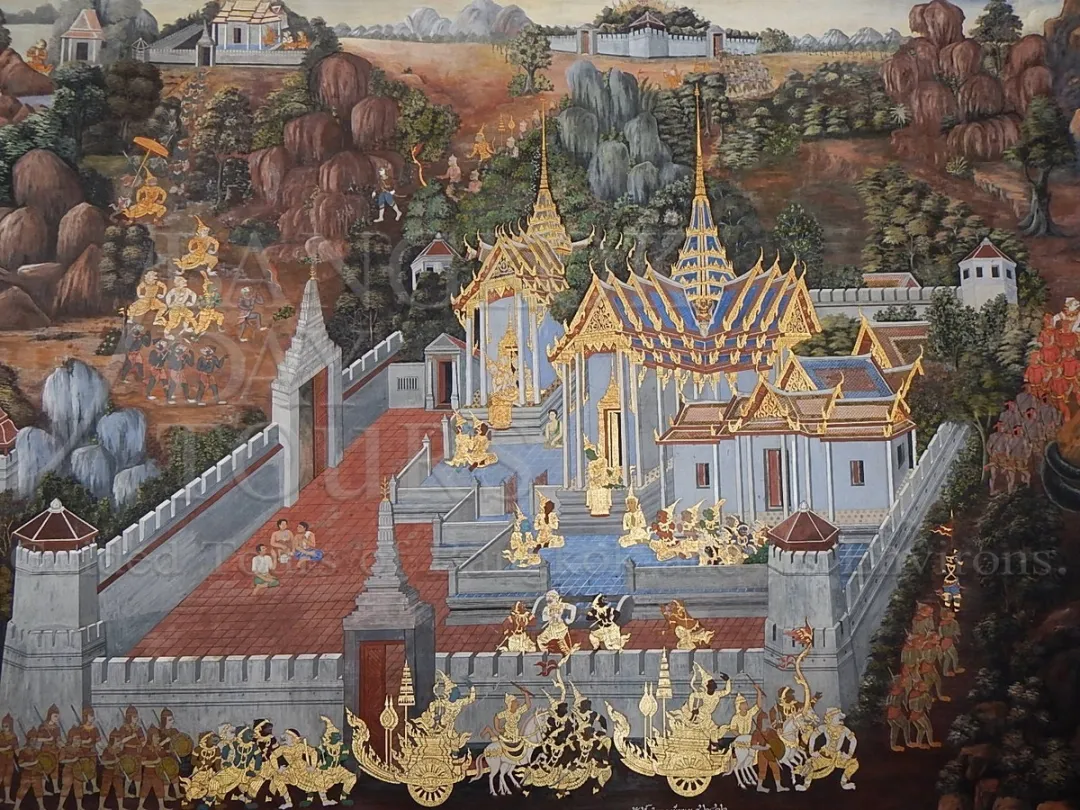
Attractions information
Grand Palace Bangkok
The Grand Palace is the most spectacular place in Bangkok, so if you only see one thing whilst in the city, this is the place to see.Thai people respectfully refer to it as Phra Borommaharatchawang. It served as the official residence of the King of Thailand from the 18th -20th century.
The Grand Palace complex, construction of which began in 1782 during the reign of King Rama I, sits on the east bank of the Chao Phraya River and is surrounded by a defensive wall 1,900 metres in length, which encloses an area of 218,400 square metres. Within its walls, in times past, were the Thai war ministry, state departments, and even the mint.
Within the palace complex are several impressive buildings including Wat Phra Kaeo or the Temple of the Emerald Buddha, which contains the revered Emerald Buddha that dates back to the 14th century.
Thai Kings stopped living in the palace in the middle of the twentieth century, but the royal residence is still used by visiting dignitaries.
Important Information
A strict dress code applies here. The Grand Palace and The Temple of the Emerald Buddha is Thailand's most sacred site. Visitors must be properly dressed before being allowed entry to the temple. Men must wear long pants and shirts with sleeves. No tank tops or singlets. Women must be similarly modestly dressed. No see-through clothes or bare shoulders. No shorts or tights. Proper shoes must be worn. No flip flops.
Oceania Nautica Two Day Tour (Code:KT2000)
Pick a day and people
THB 19,200.00
THB 22,400.00
THB 26,200.00
THB 32,200.00
THB 36,000.00
THB 40,600.00
THB 44,500.00
THB 51,400.00
THB 57,600.00
THB 72,000.00
THB 76,600.00
THB 81,200.00
This tour is exclusive to Klong Toey Port Cruise Ship Passengers. There are also exclusive tours
Nautica is due in at 09:00 and leaves the next day at 14:00. First day will be in Kanchanaburi: Tiger Temple- Elephant Ride- Bridge over the River Kwai. Next morning we'll go to Wat Pho with its Reclining Buddha and the Grand Palace then back to the ship by around 12:30.
Do you want your tailor-made tour?
A tailor-made tour is the best kind of independent travel itinerary, designed and arranged just for you and your needs.
All events and activities are part of your very personal, privately guided tour.
Just ask us and we will be happy to make your tour an unforgettable experience. We have been doing this for 25 years and the quality of tailor made tours has never changed.
Why is a private tour a better choice?
With a private tour, you have the freedom to choose what you want to do and when you want to do it. There is much more room for flexibility and changes to your itinerary at every step of the way because you don't have to consider the needs of other travelers. The flexibility and freedom to make the most of your time is the reason why so many people choose to take a private tour rather than a group tour.Tour Programme
10:00 - Day 1 Departs
10:00 - Pick up dockside Klong Toey Port
We'll be waiting for you when you get off the ship. Your guide will have a sign with your name on it. The sooner you get off the sooner we can leave.Read More >
12:30 - Lunch in a Kanchanaburi Provincial Restaurant
Lunch will be served in a local Thai restaurant. Read More >
13:30 - Arrive at Tiger Temple
We'll have you at the Tiger Temple nice and early so you can enjoy the experience to the max. Remember there are many animals here, not only tigers. Pics with adult tigers cost 1000 Baht extra. Tiger cub feeding is 1500 Baht extra with a maximum of four.Read More >
15:30 - Elephant Ride
The elephant camp is not far from the Tiger temple and here you'll be able to experience the unique sway of an elephant ride.Read More >
17:00 - Bridge over the River Kwai
A quick stop at the bridge before heading back to Bangkok. Great photo ops here.Read More >
17:30 - Depart for Bangkok
You can relax in air conditioned comfort while the driver returns you to your ship at Klong Toey or drops you at the Suan Lum Night Bazaar.
20:00 - Arrive back at ship or at Suan Lum Night Bazaar
You can expect to be back at the ship or at the Suan Lum Night Bazaar by 8:00pm depending on the traffic. If you choose Suan Lum, you can taxi back to the ship at your leisure. Read More >
08:00 - Day 2 Departs
08:00 - Pick up dockside Klong Toey Port
We'll pick you up from your ship in the same place as yesterday.
08:45 - Wat Pho Reclining Buddha Temple
Wat Po is considered Thailand's first university and houses the famous Reclining Buddha.Read More >
10:00 - Grand Palace Wat Phra Kaeo
The Grand Palace incorporates Wat Phra Kaeo or the Temple of the Emerald Buddha which is Thailand's most revered temple. Please dress accordingly.Read More >
11:45 - Depart for Klong Toey
You can relax in air conditioned comfort while the driver returns you to your ship at Klong Toey.
12:30 - Arrive back at your ship
You can expect to be back on board by 12:30pm depending on the traffic.
Important Information
A strict dress code applies at The Grand Palace. Men must wear long pants and shirts with sleeves. No tank tops or singlets. Women must be similarly modestly dressed. No see-through clothes or bare shoulders. No shorts or tights. Proper shoes must be worn. No flip flops.
At the Tiger Temple women must cover their shoulders and knees. Tank tops, short skirts, shorts, shawls and scarves are not permitted. Tights cannot be worn as an outer garment. Bright colours such as red, orange, and pink are not allowed.





